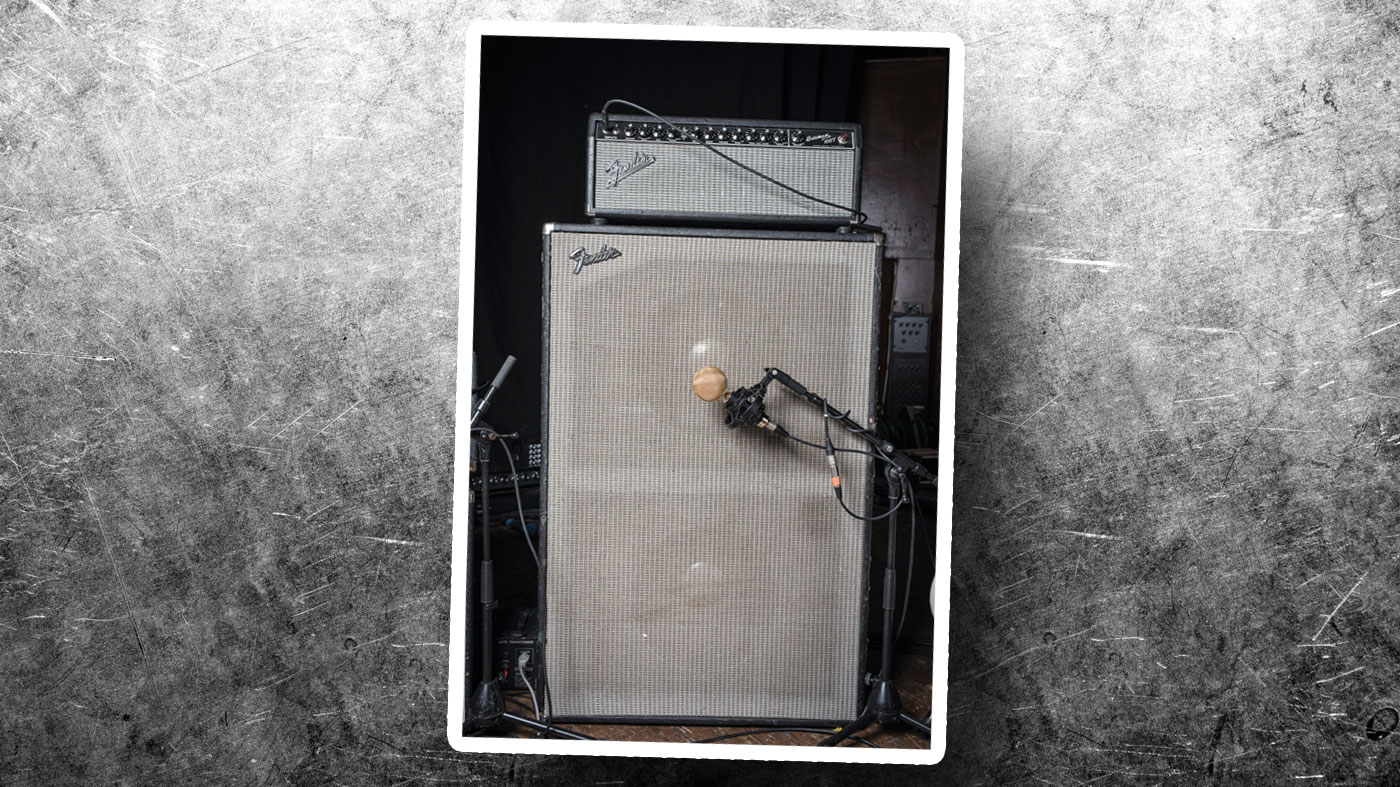Rig tour: Explosions In The Sky
Munaf, Mark and Michael talk live tone
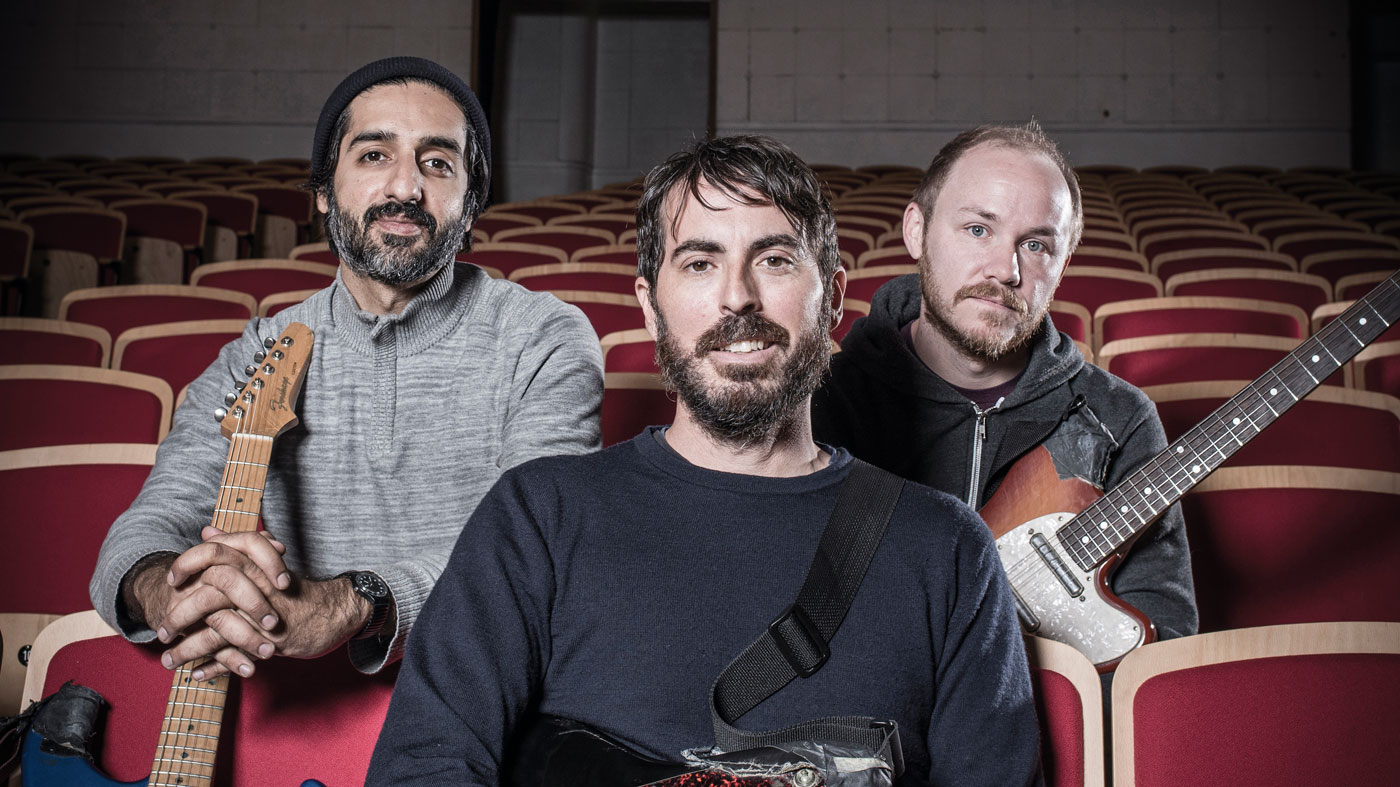
Introduction
As the Texan post-rock pioneers play their first UK gigs in four years, we sit down to talk unique guitars, dodgy delays, and why newer isn’t always better…
They don’t lust after boutique or trendy gear - they just use what works for them
Given that they’re one of the bands that defined the effects heavy post-rock genre, Explosions In The Sky aren’t conventional gearheads. They’re particular about what they use, of course - as the majestic and emotive soundscapes the band has been crafting since 1999 clearly attest - but they’re not overly precious about it either.
Case in point is the remarkable fact that their current tour, supporting seventh album, The Wilderness, is the first time they’ve had pedalboards. Ever.
“That’s brand new - that’s like two weeks old!” exclaims guitarist Munaf Rayani. “Otherwise we’ve laid out our pedals every night for what… 16 years?”
It seems insane that a band that’s toured the world for a decade and a half have done so without a bit of kit that even pub giggers use to keep their pedals safe - but that’s just how Rayani, and fellow guitarists Mark Smith and Michael James (who also plays bass) operate.
From the old Boss reverb pedal they can’t live without, to esoteric budget electrics, they don’t lust after boutique or trendy gear - they just use what works for them, and the results are truly spectacular.
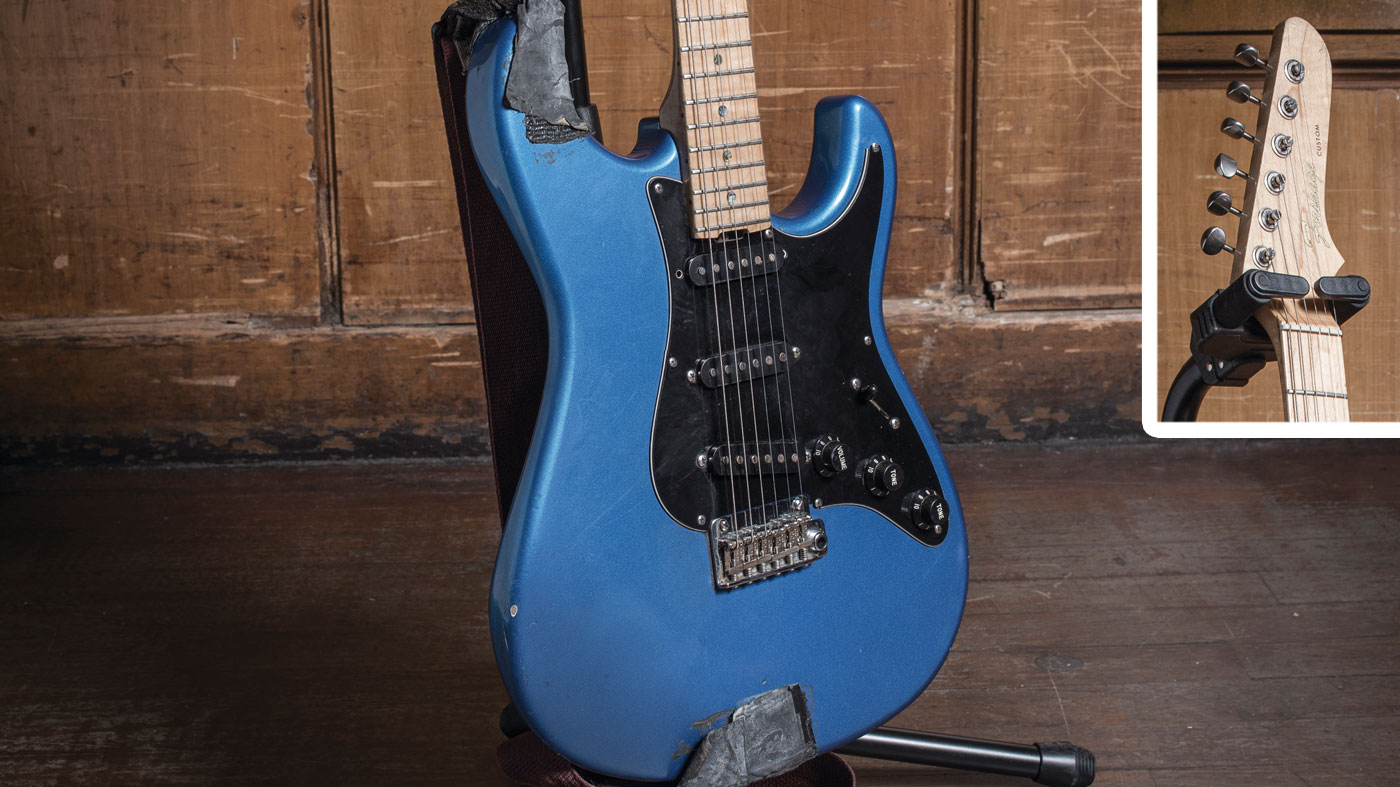
Forshage Custom
Munaf Rayani: “There’s a great guitar builder in Austin called Chris Forshage, but we never used him for those purposes - he’s just been the luthier that sets up our guitars and fixed any busted pickups or bent necks, and we’ve been friends for years now.
After all these years of me bringing in my guitar and seeing what went wrong with it, he used all that information to modify a Strat design for me
“One day I brought in our guitars, and was explaining what work needed doing on them, and he’s like, ‘Hold on a second…’ And he walks over to this closet, and out of the closet comes this beautiful blue Strat replica. And he says, ‘Here, this is for you.’
“After all these years of me bringing in my guitar and seeing what went wrong with it, he used all that information to modify a Strat design for me. What an amazing gift. But still, I was so partial to the Strat that I was a bit nervous. But I took it on tour, did the first soundcheck, and boy… it just sang! It’s been my number one guitar for a number of years now.
“Another beautiful thing is that he primed it white, with the anticipation that I was going to drop it a few times and so the finish would start cracking, and it would show this beautiful white under the blue - which has begun! It’s kind of incredible that he thought all that through.”
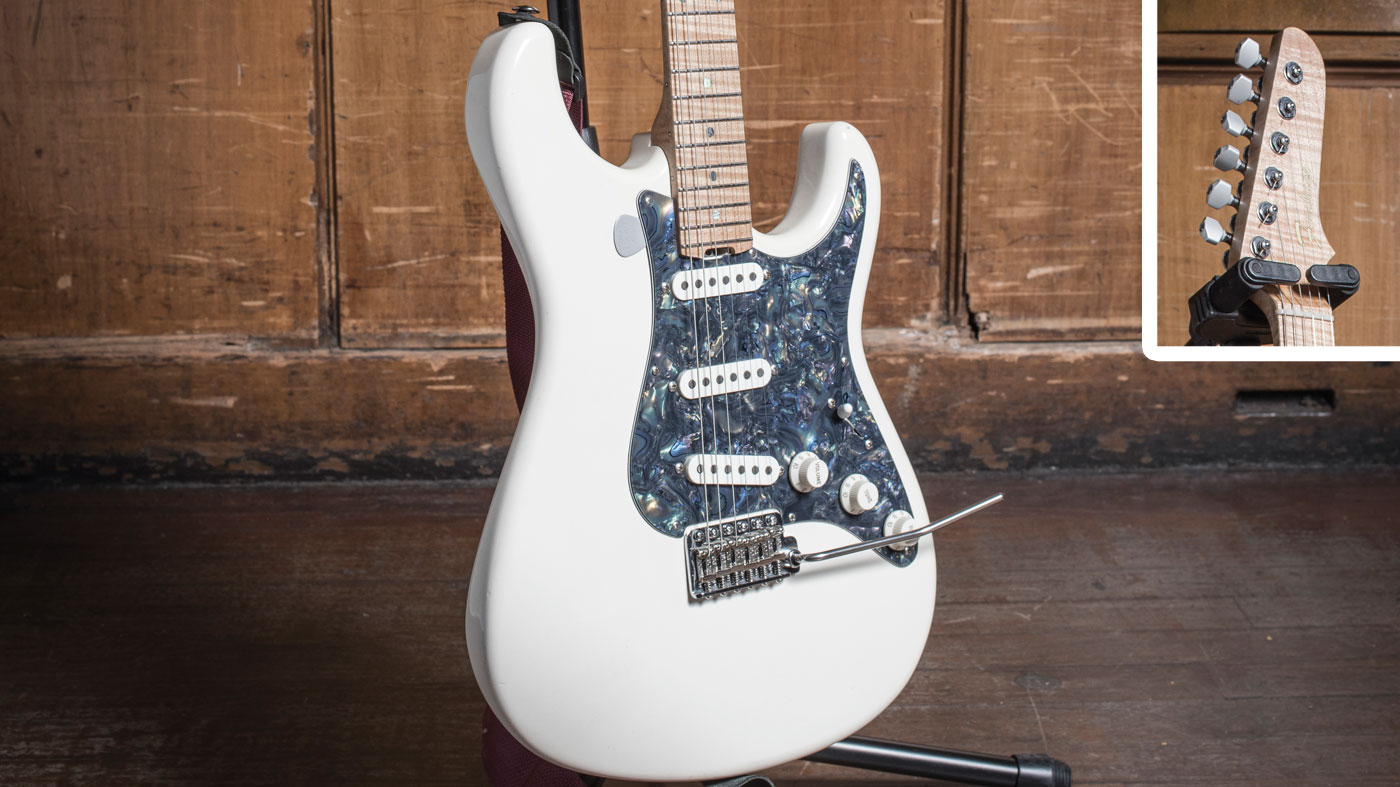
Forshage Custom
Munaf: “Just before this tour, Chris gave me this other one, which has more of a floating bridge that I use for one of the tracks we’re playing in the set.
He changed the position of the jack socket, so that I could use an L jack, and it doesn’t get caught up so easily.
“They’re pretty incredible guitars. There are certain pickups he enjoys that, I’m not even sure what he’s using, but I know that I like them!
“One particular example of the modifications is that he realised how much I was throwing the guitar around, so he changed the position of the jack socket to the edge of the body like a Telecaster, so that I could use an L jack, and it doesn’t get caught up so easily.”
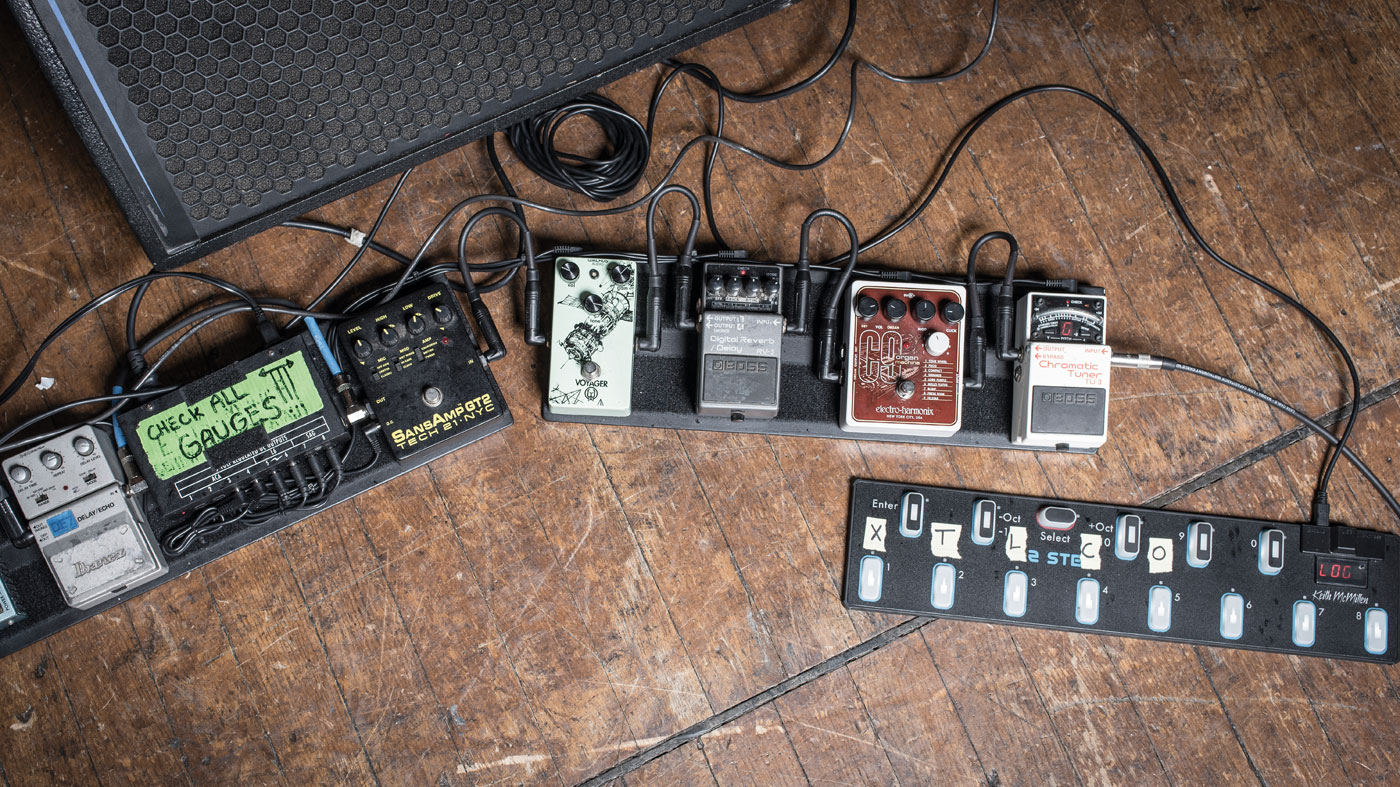
Munaf's pedalboard
Ibanez DE7
Munaf: “This was one of the first delay pedals that I got… so many years ago, maybe in ’99 or 2000. It was one of, if not the cheapest delay pedals at the store. And I just stayed with it over the years… and it craps out and it breaks out on me more often than desired [laughs], and so I have to go looking for it again - I think we have about three or four of them now, but they’re long discontinued.”
Tech 21 SansAmp GT2 & Walrus Audio Voyager
Munaf: “The SansAmp is sometimes used as a booster, but I use it more as the main distortion, and then the Walrus pedal, it gives this great kind of ‘soft’ dirt, which I use to play some lines off the newest album. But then those in conjunction help boost one another.”
Boss RV-3
Munaf: “However they wired this pedal, that’s the one that we have just stayed with. They must be on the sixth edition now and it just evolved in a way that is no longer conducive to us. I mean, right after the third! Four doesn’t work, five doesn’t work… Obviously, this one is also discontinued, so we have to go searching for it in second-hand shops and on eBay, and we have about three of those in reserve.”
Electro-Harmonix C9 Organ Machine
Munaf: “We just incorporated this and the B9 in time for the new album - they’re great, I love ’em. We’re trying to be very careful how we use them, however - because they have a very distinct effect, and I think if over-done, then its quality can get lost and it can become a bit stale.”
Keith Mcmillen Instruments 12 Step MIDI Controller
Munaf: “We were looking for a MIDI foot-pedal because we’re using more samples throughout the set. We were running it from the [Roland SP-]404SX, which is really just a sample trigger. So connecting the two - the Roland and 12 Step - allows us to have more limbs!”
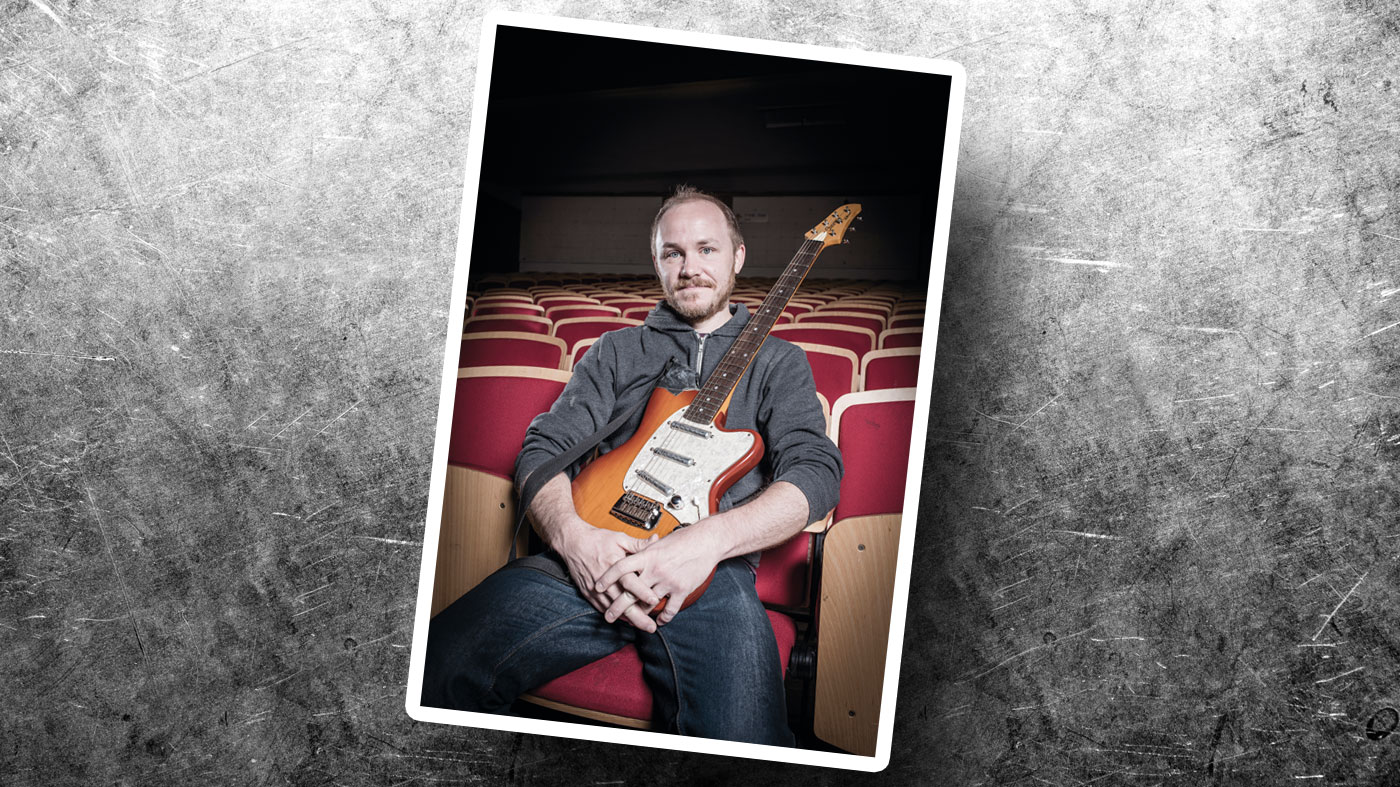
Ibanez Talman
Michael James: “I got my first one when I was 16 years old, I got it cheap, because somebody had tried to turn it into a left-handed guitar - they’d stuck a strap peg right behind the neck and split it a little bit…
My original Talman that I bought when I was 16, it’s my best friend - I don’t even bring it on tour any more
“So I got it for like 100 bucks, and I just loved it - I developed my whole style around this guitar and how it works, so now I don’t want to play any other guitar.
“Because I play into a bass cabinet, those lipstick tube pickups give a thin sound, but it’s also very clean, so I can put that through the bass cabinet, and it really thickens it up.
“My original Talman that I bought when I was 16, it’s my best friend - I don’t even bring it on tour any more. Because if you bring it on tour, chances are it’s going to break!”
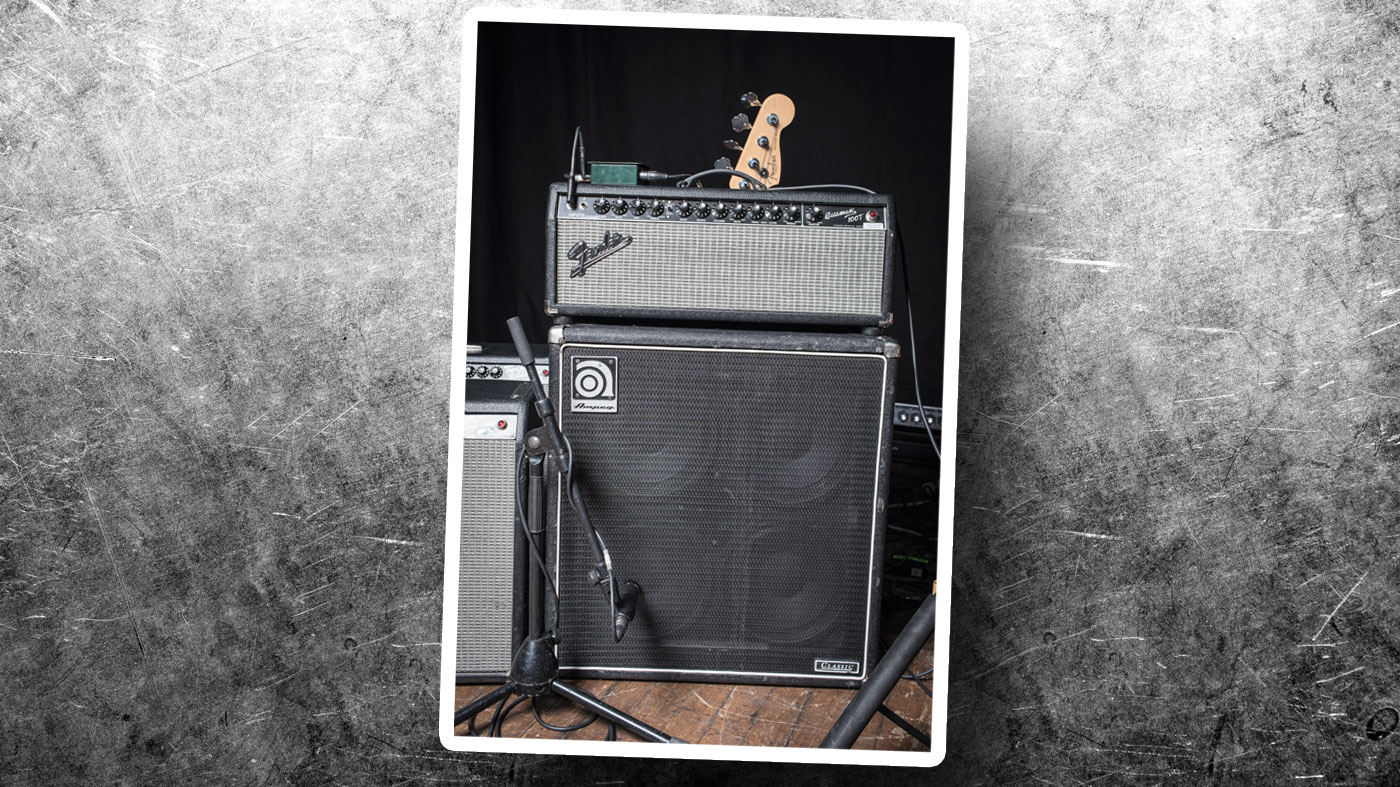
Fender Dual Showman Reverb
Michael: “I play this through an Ampeg bass cabinet. I’ve honed the sound over the years so I can plug both bass and guitar in, and they both sound good.
Now I feel like I’ve got to the point where both guitar and bass sound great through it
“I mess with it a lot - for a while I had to sacrifice the guitar sound to get a good bass sound and vice versa, but now I feel like I’ve got to the point where they both sound great through the same combo - a Fender Dual Showman through a bass cabinet is just… awesome!”
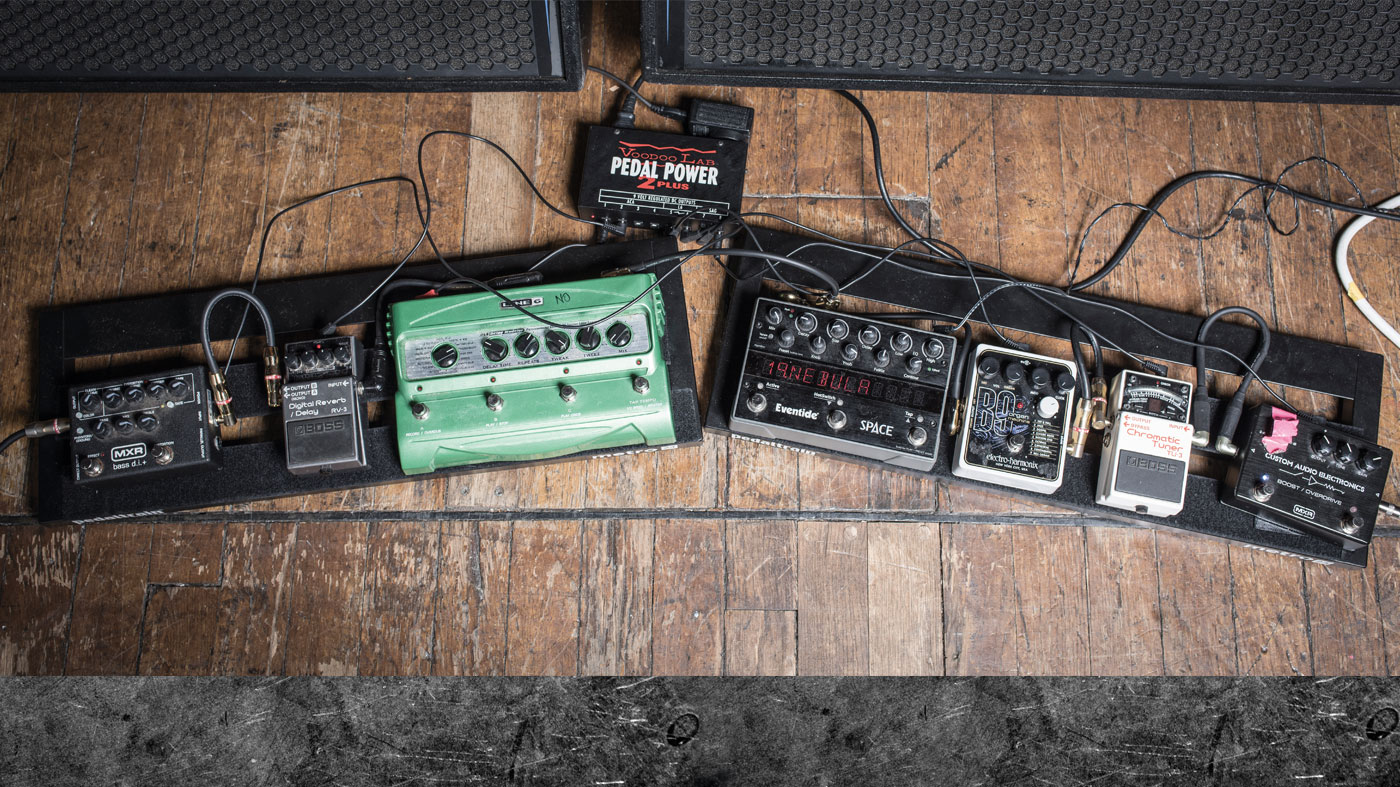
Michael's pedalboard
MXR Bass DI
Michael: “This is just for distortion - I use it for guitar and bass distortion, actually. I got it just for bass, but it sounds great with the guitar and really thickens up the sounds. I don’t use a ton of distortion on guitar, so it’s just for big sounds.”
Boss RV-3
Michael: “The sound of the RV-3… it’s cloudy enough to mask the digital-ness of it. As the models went along, they just got cleaner and clearer - which is fine if that’s what you’re looking for, but you can also hear the digital sound of that reverb much clearer. Whereas the RV-3 puts this little sheen over everything that makes it sound beautiful and angelic, without sounding really digital.”
Line 6 DL4
Michael: “It’s a classic, man - but talk about unreliable! We go through about three a year! But I love that pedal, and we’ve been using them since the beginning. Mark and I generally use the same settings in different ways - the stereo delays mainly. Even though we don’t send it out stereo, it still gives it a very interesting bounce to it.”
Eventide Space
Michael: “When we first started writing this record I got that, and it was just the sound of a couple of songs - I couldn’t play them without it. I use about two per cent of the functionality on it right now, but the two per cent I use is amazing!”
Electro-Harmonix B9 Organ Machine
Michael: “This is amazing. We used it in the studio to get some more unique and interesting sounds, and then we realised that we had to find these sounds on the road as well. But it can sound like a circus organ if you’re not careful!”
MXR Custom Boost
Michael: “I got that because the Talman is just a very quiet guitar. Those lipstick tube pickups, they don’t have a lot of punch, so nobody could ever really hear me. So finally, our sound guy, Jeff Bird, recommended this… and everyone can hear me all of a sudden!”
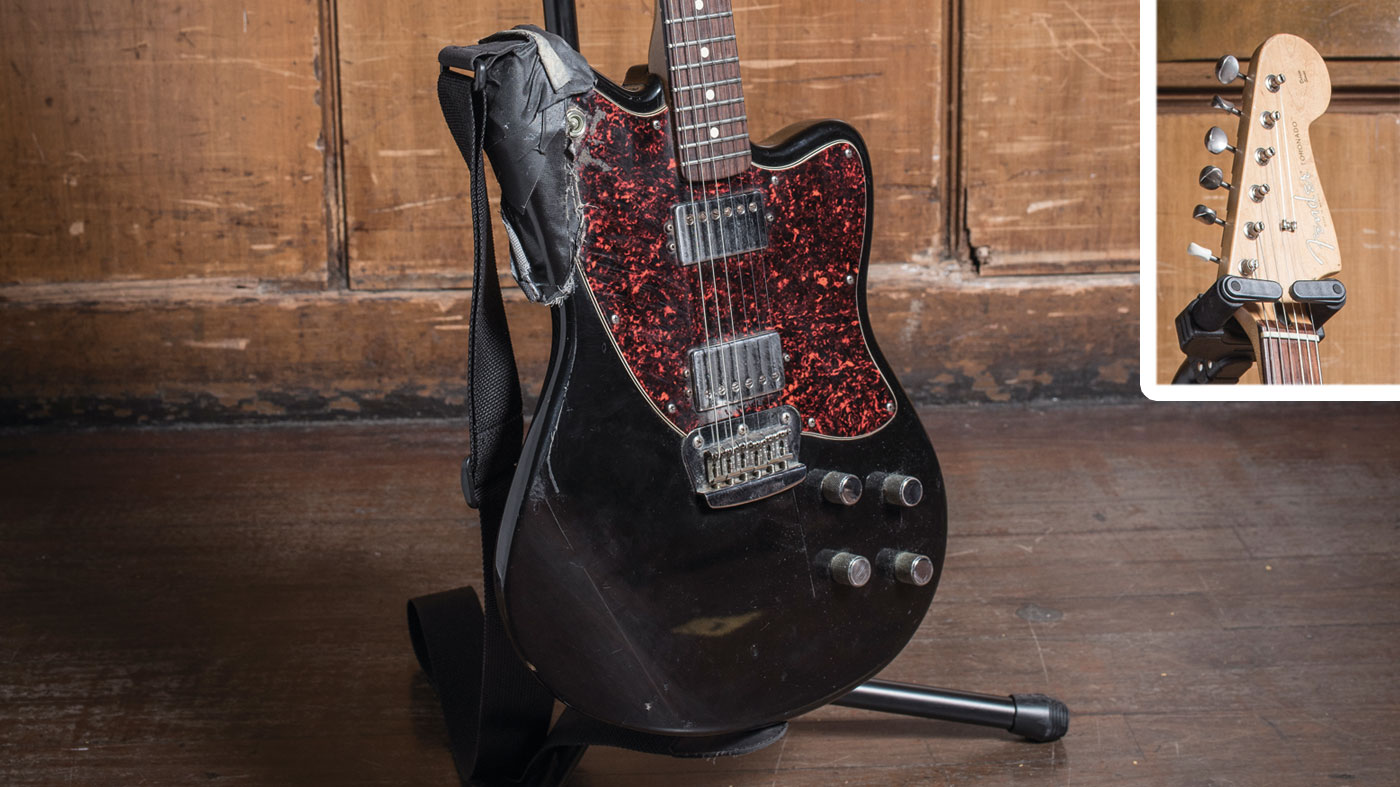
Fender Toronado
Mark Smith: “It’s hard to go back and separate myself from this guitar. After our first album, we decided to basically go all-in on this band.
I liked the way it looked, and it had a clear and chiming sound I was really into from loving Pavement
“We were mostly broke and we got some credit cards, and went to one of the big music stores. Michael already had his Ibanez, and Munaf already had his Strat.
“So I just started trying guitars out. They had this Toronado, and the guy working there told me Robert Smith used one, and after hearing that and playing the guitar, I was pretty sold. I liked the way it looked, and it had a clear and chiming sound I was really into from loving Pavement. And I liked that it had an extra fret over guitars like the Strat - I’ve always enjoyed playing really high up on the neck.”
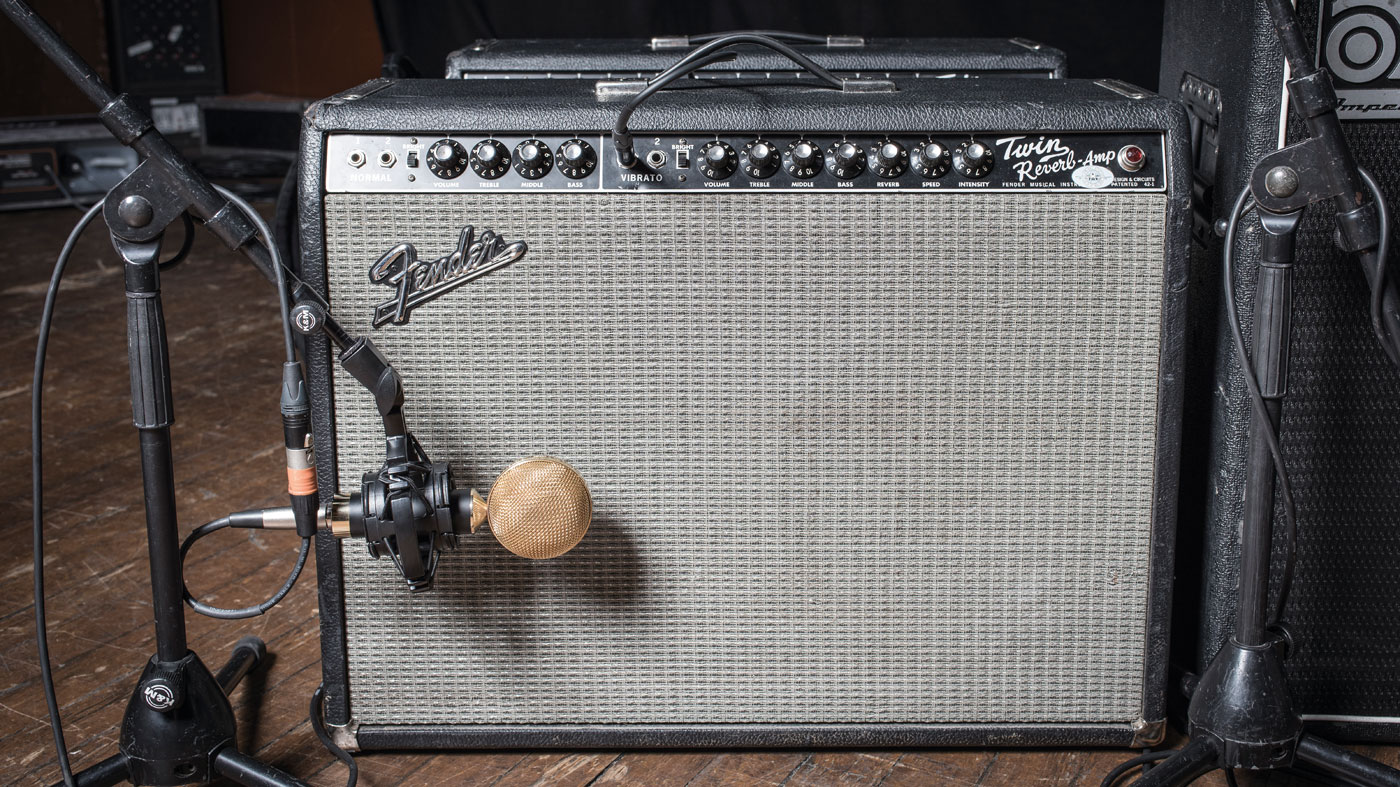
Fender Twin Reverb
Mark: “I really love this, and I know that I can count on it - it’s consistent and versatile.But this is one of those things where sometimes you just do what works best for us as a team.
My more trebly, clear tone sits really well in the mix with their tones, and it’s not something I really want to go away from
“I first got a Twin Reverb very early on in the band - probably during the writing of the second album. It was loud, clear, could handle the distortion without breaking up, and we could afford it. So I found my tone on it at that time.
“Being honest, if I were just playing on my own I would gravitate more towards the sounds of the Dual Showman. But if I did that, all our guitars would be in the same frequency range and there wouldn’t be enough differentiation between the guitar lines. My more trebly, clear tone sits really well in the mix with their tones, and it’s not something I really want to go away from, because it so clearly works for us.”
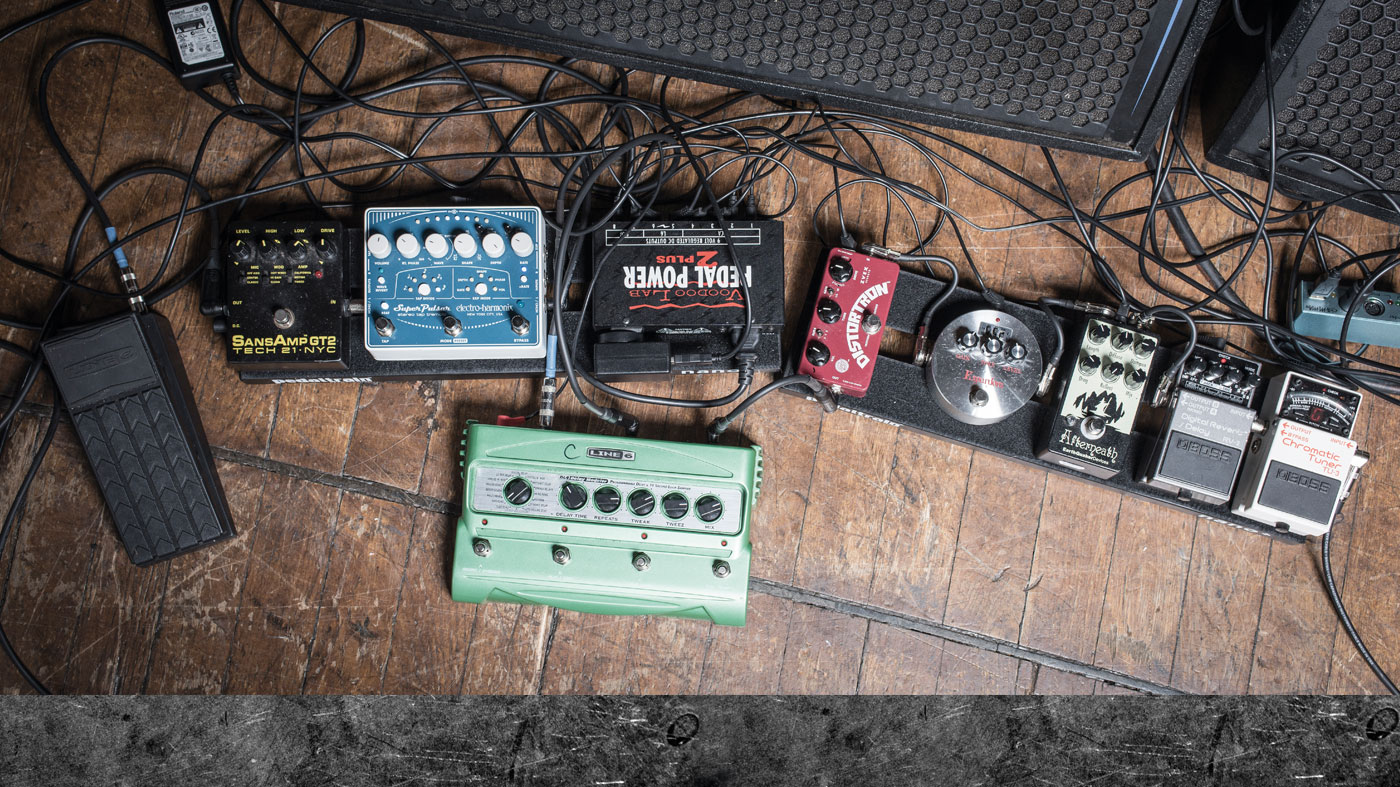
Mark's pedalboard
Tech 21 SansAmp GT2
Mark: “This is the one I use for the real apexes of our songs. It can just boost a melody so it shoots through in a way that works really well - like when Munaf and Michael are playing really heavy chords on songs like The Only Moment We Were Alone or Greet Death, I play this pedal for the melodies.”
Electro-Harmonix Super Pulsar
Mark: “This is brand new. With this record, we didn’t play a lot of it live before recording, so we had to reverse engineer the sounds we got in the studio. I got this to replicate the tremolo sounds on Disintegration Anxiety and Colors In Space, which we made in the studio using a pedal I borrowed from [producer] John Congleton.”
Line 6 DL4
Mark: “This is the only pedal I’ve been using since our first record. It makes a brief appearance on that record, and then I’ve used it on pretty much every song since. Of course, this is probably the 15th one I’ve had to buy, because they tend to break too easily, in my opinion. I use the expression pedal three or four times in the set, generally to add longer decay times to delay settings to just use in certain sections of songs, and then switch back to shorter decay times.”
ZVex Distortron
Mark: “This is the one I use for the thick, viscous distortion sounds, like the volume-swell washes from Greet Death or the power chords of Have You Passed Through This Night? - it’s a really pleasingly heavy pedal.”
Bixonic Expandora
Mark: “I probably don’t need three distortion pedals! But I borrowed this from Congleton in the studio, and ended up loving it so much I bought one off eBay. It has a nice sharpness to it without being harsh, and you can just lightly distort the guitar so it growls a little without being piercing.”
Earthquaker Afterneath
Mark: “This is another new addition. There have been times when I want the reverb to be even thicker and spacious and alien, and this pedal is my first try at it.”
Boss RV-3
Mark: “It’s been indispensable, and now that I think about it, this exact pedal has lasted me about 15 years without breaking. And we finally bought some backups - so I’m feeling good about that! There are other super nice reverb options these days, but back 15 years ago it seemed far and away the best way to get the most warmth and grandness from the guitar.”
